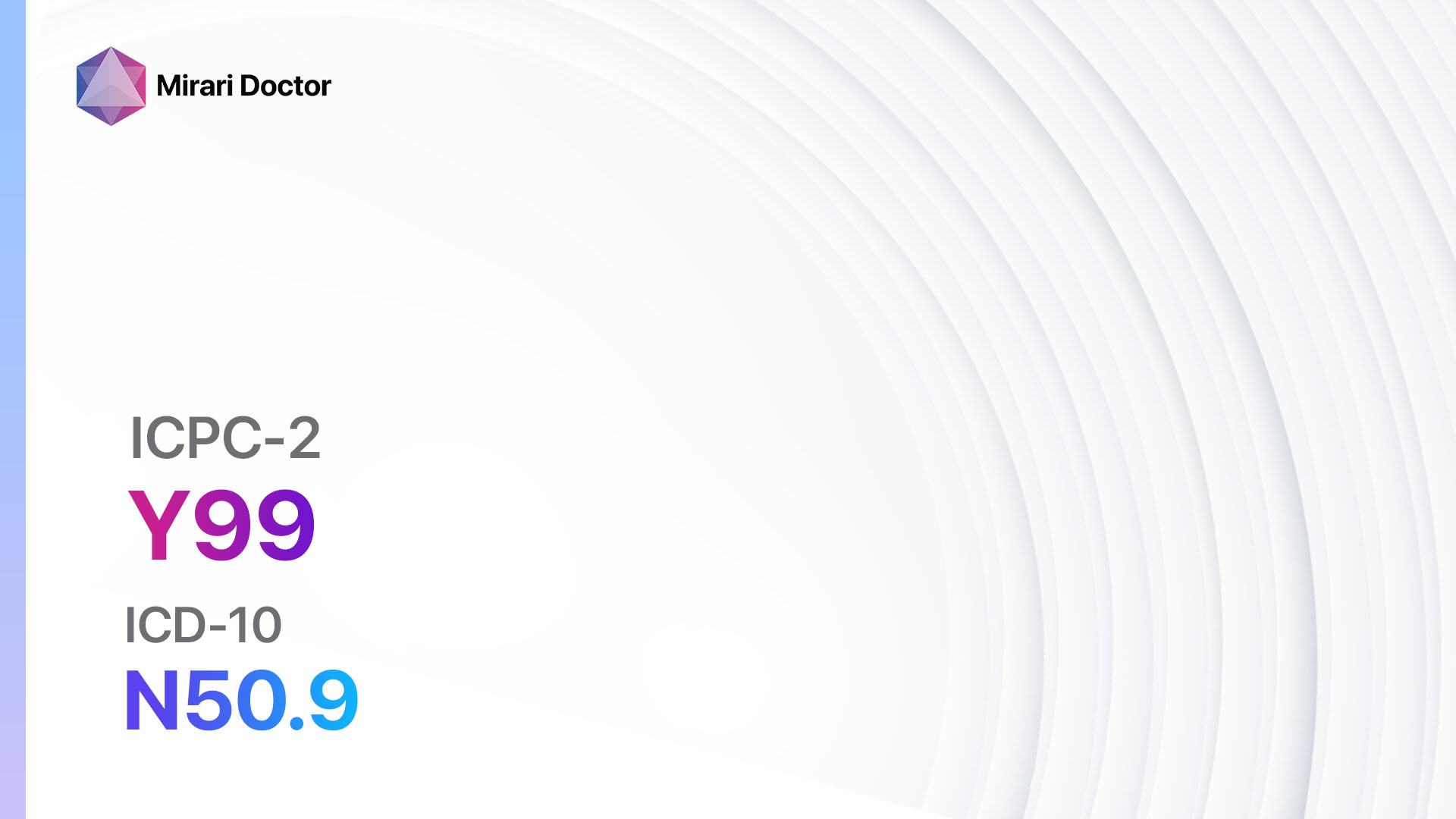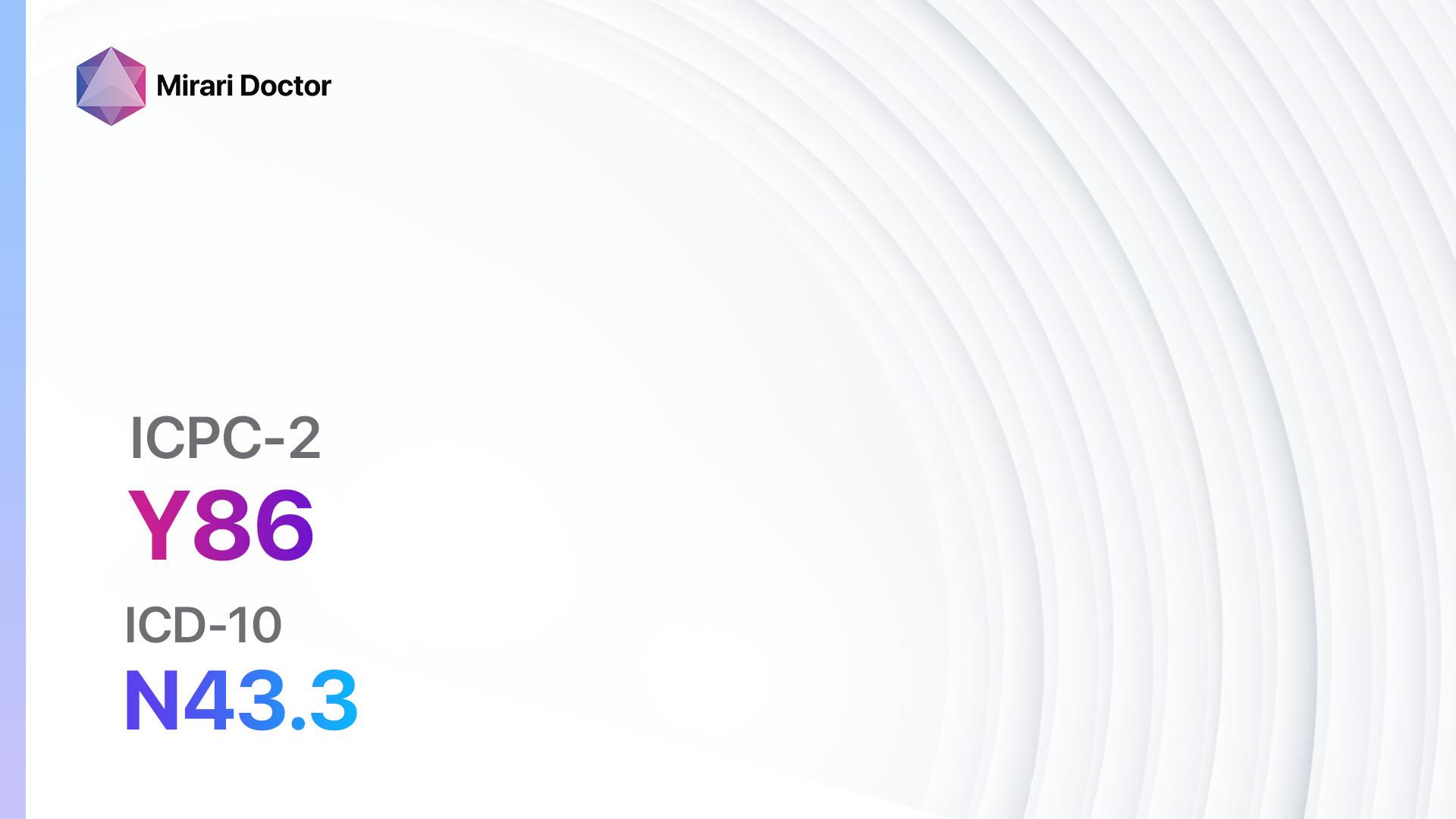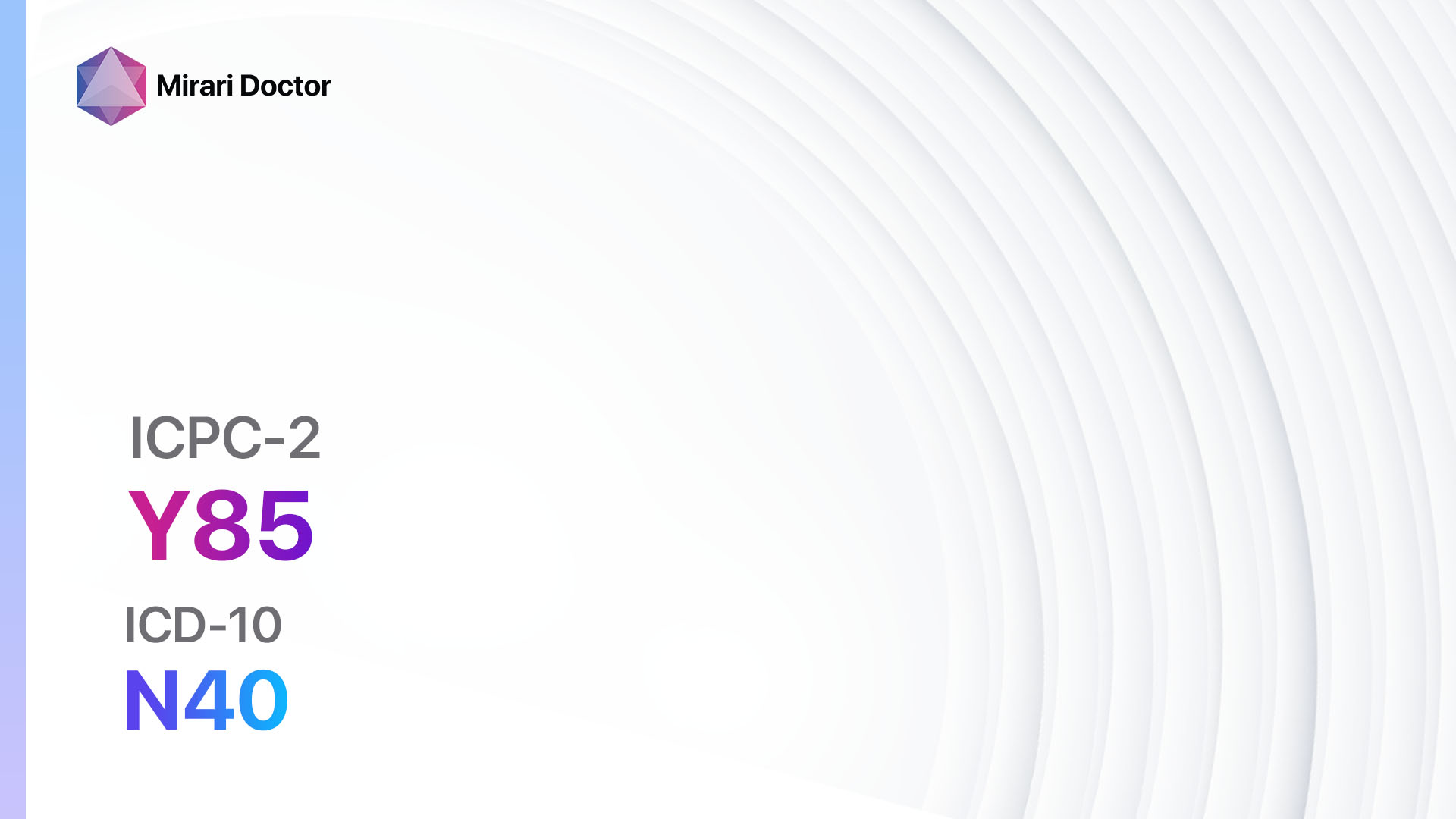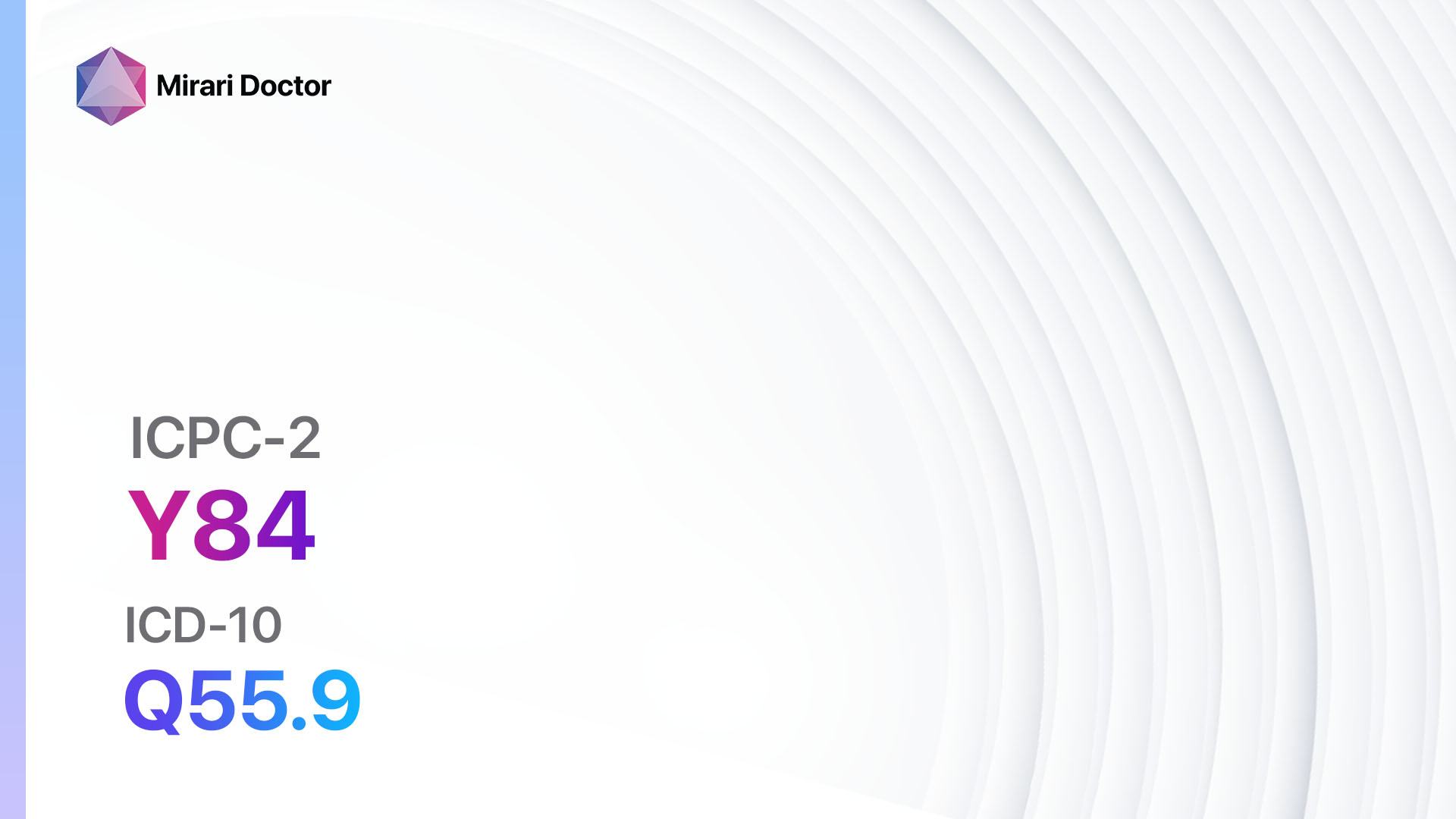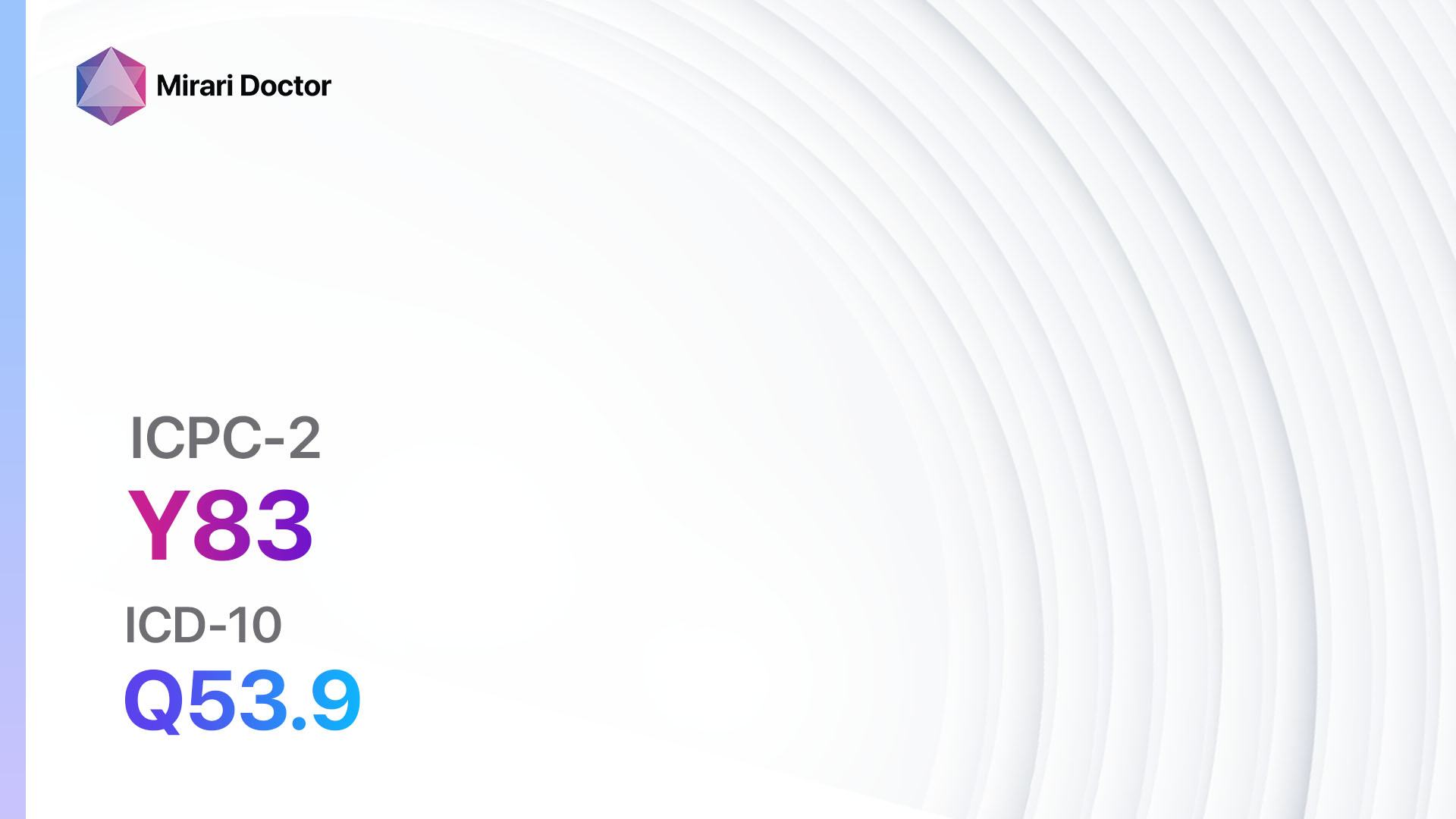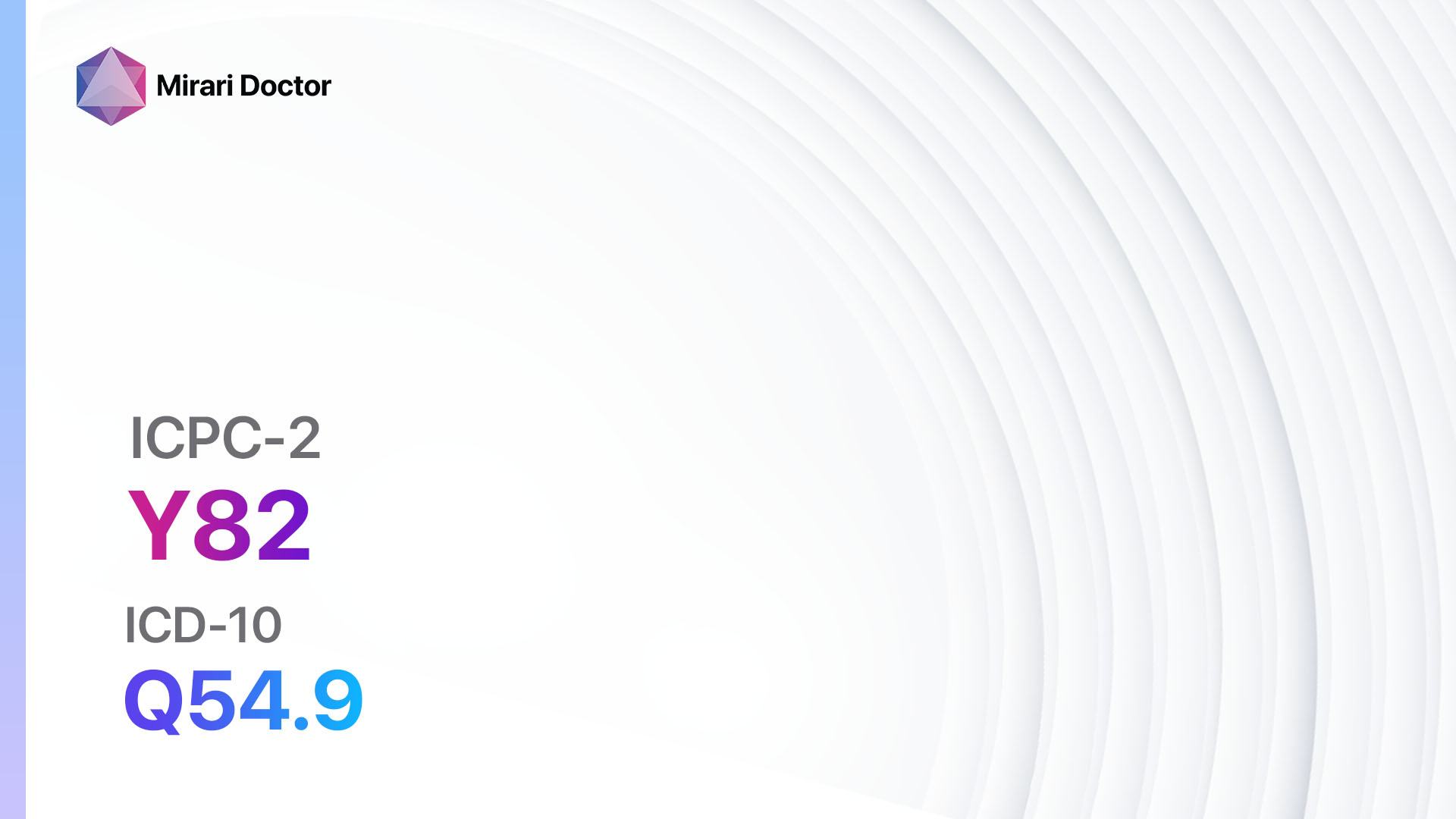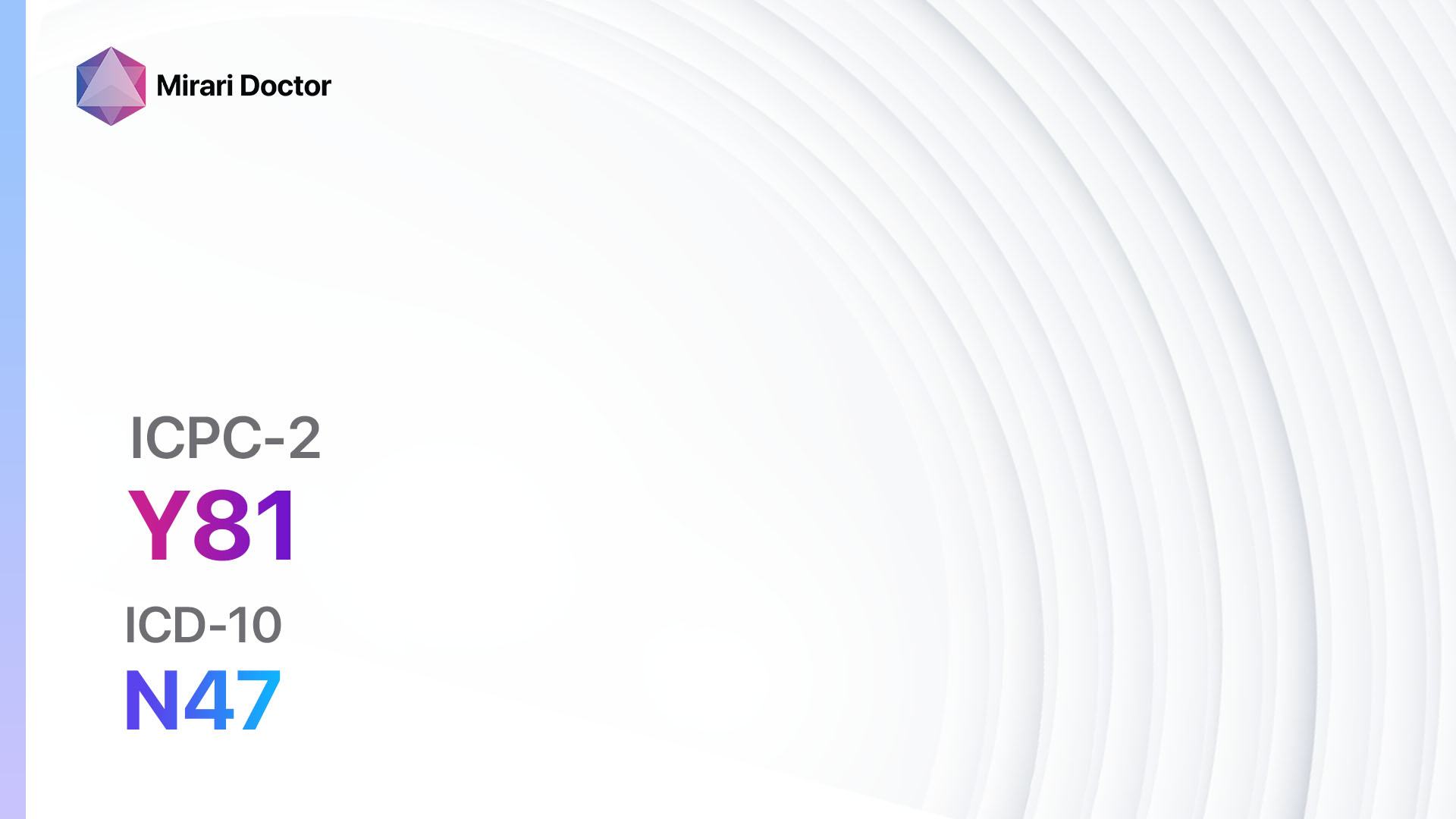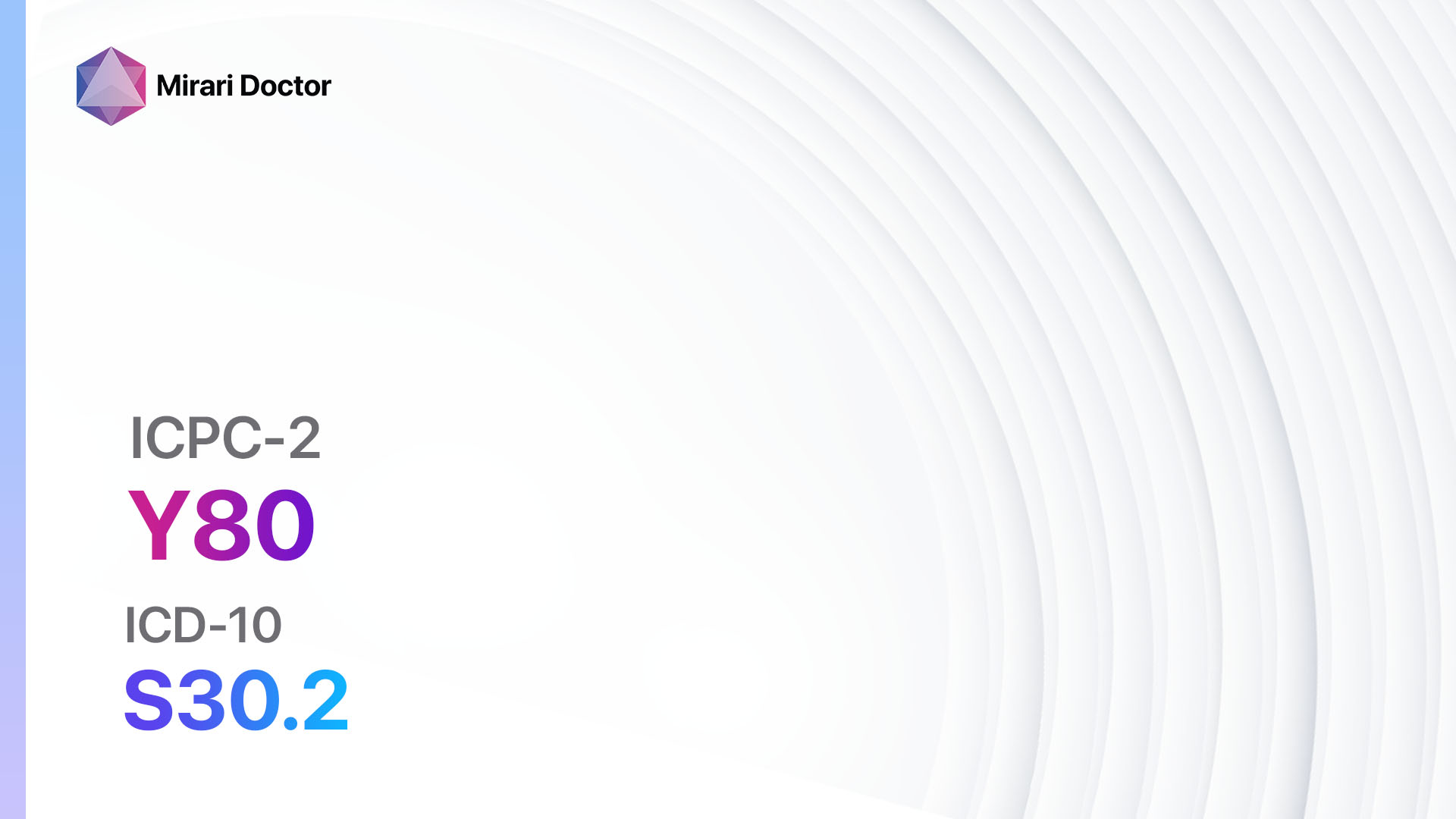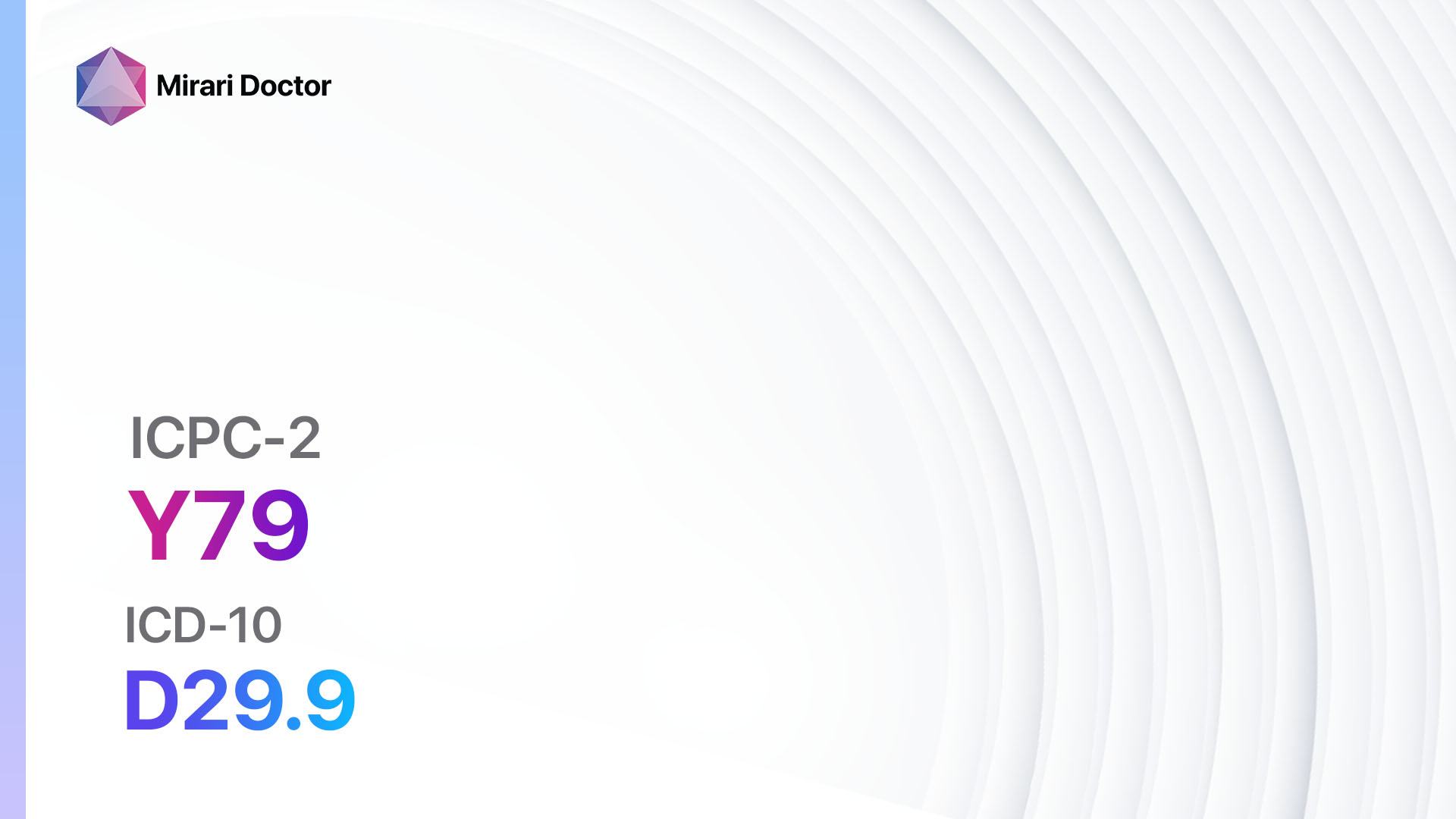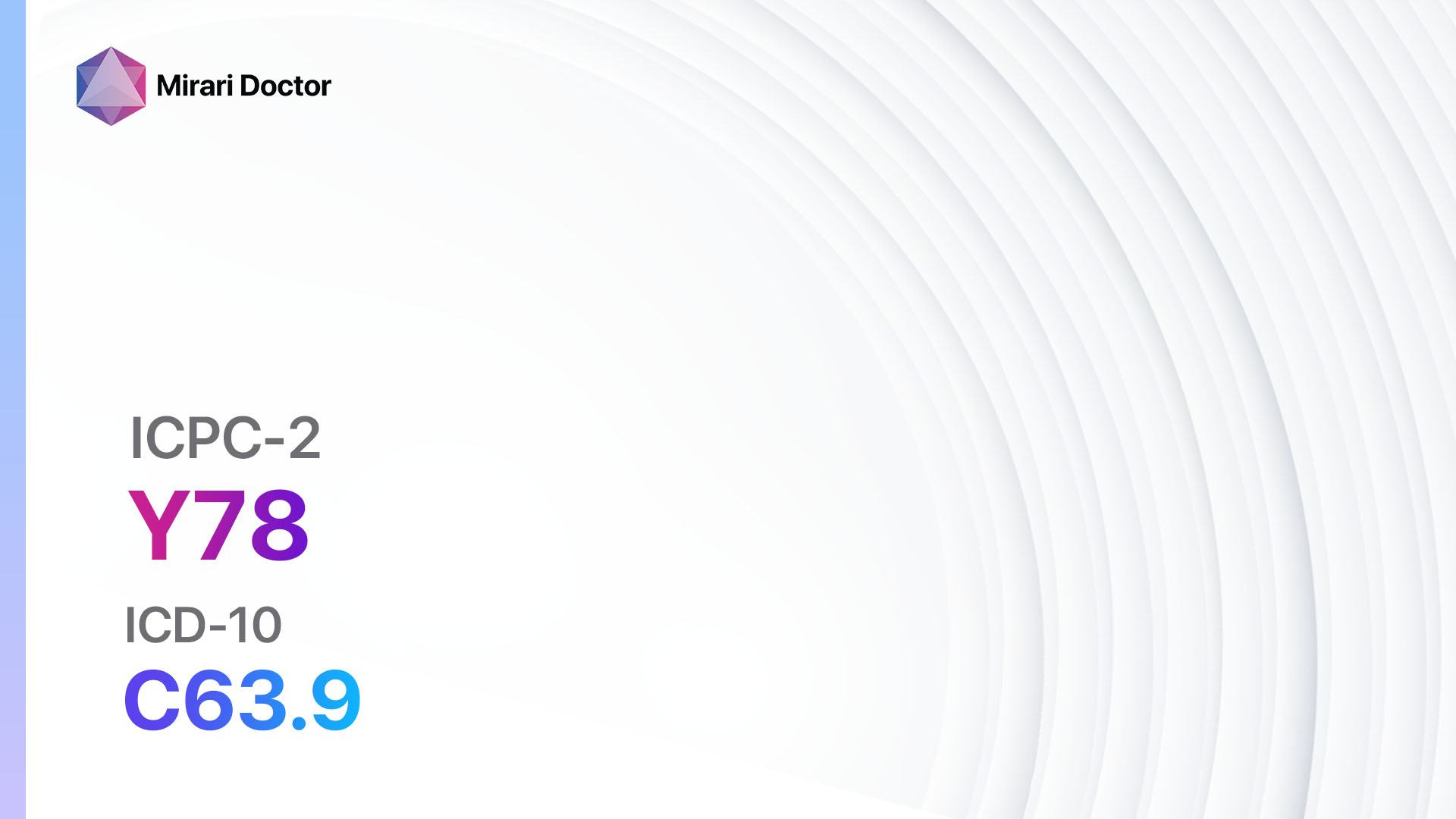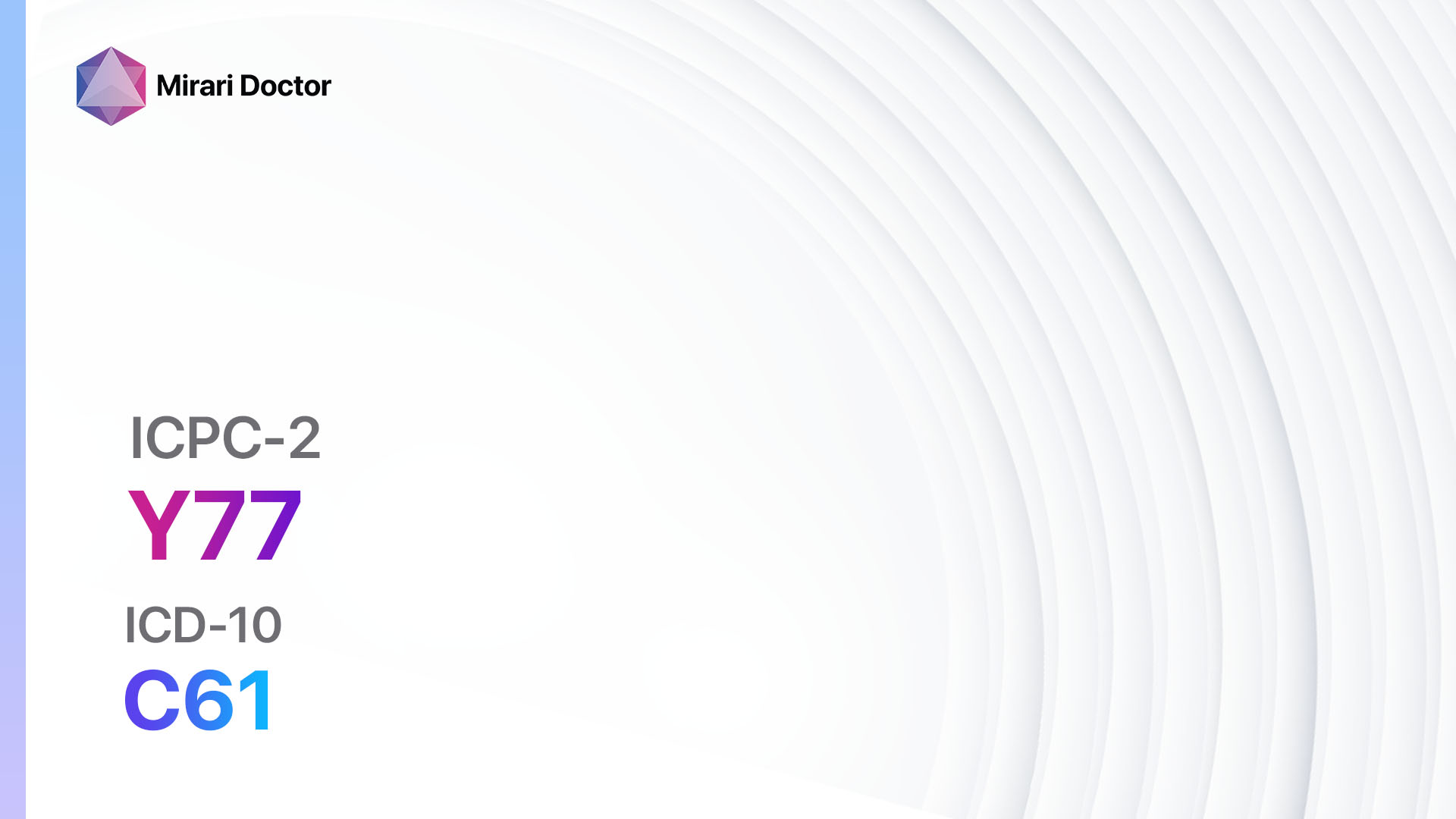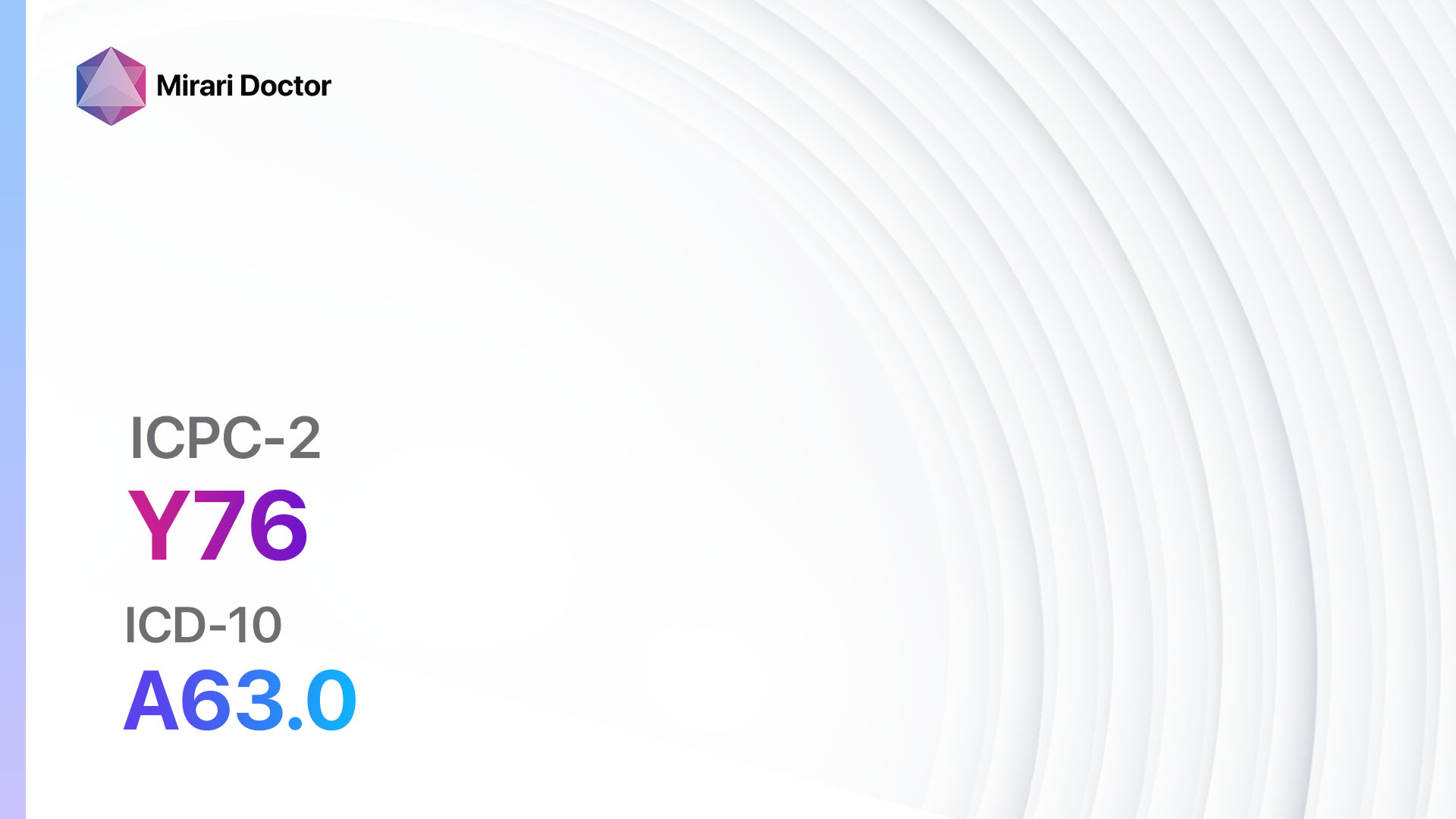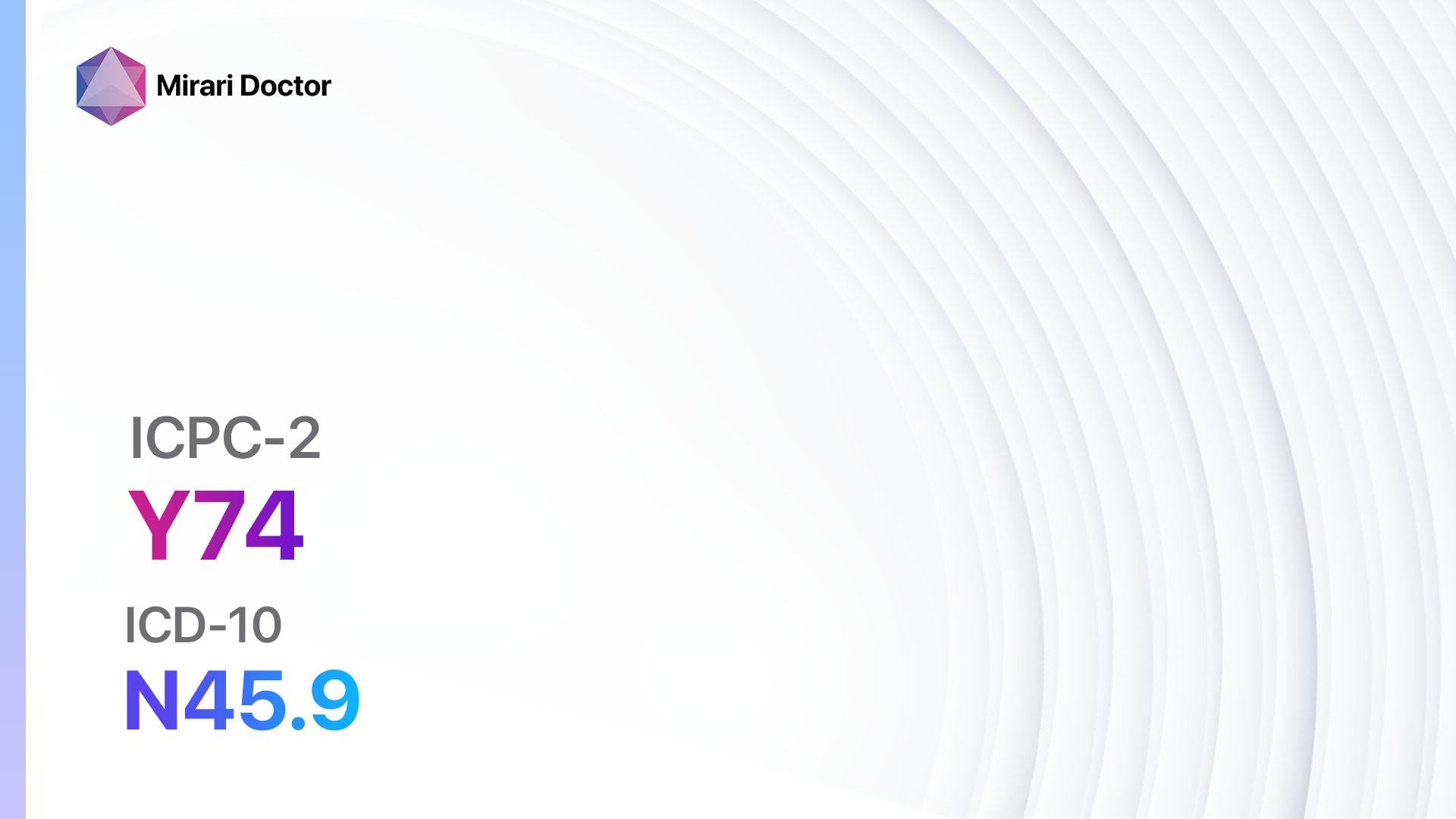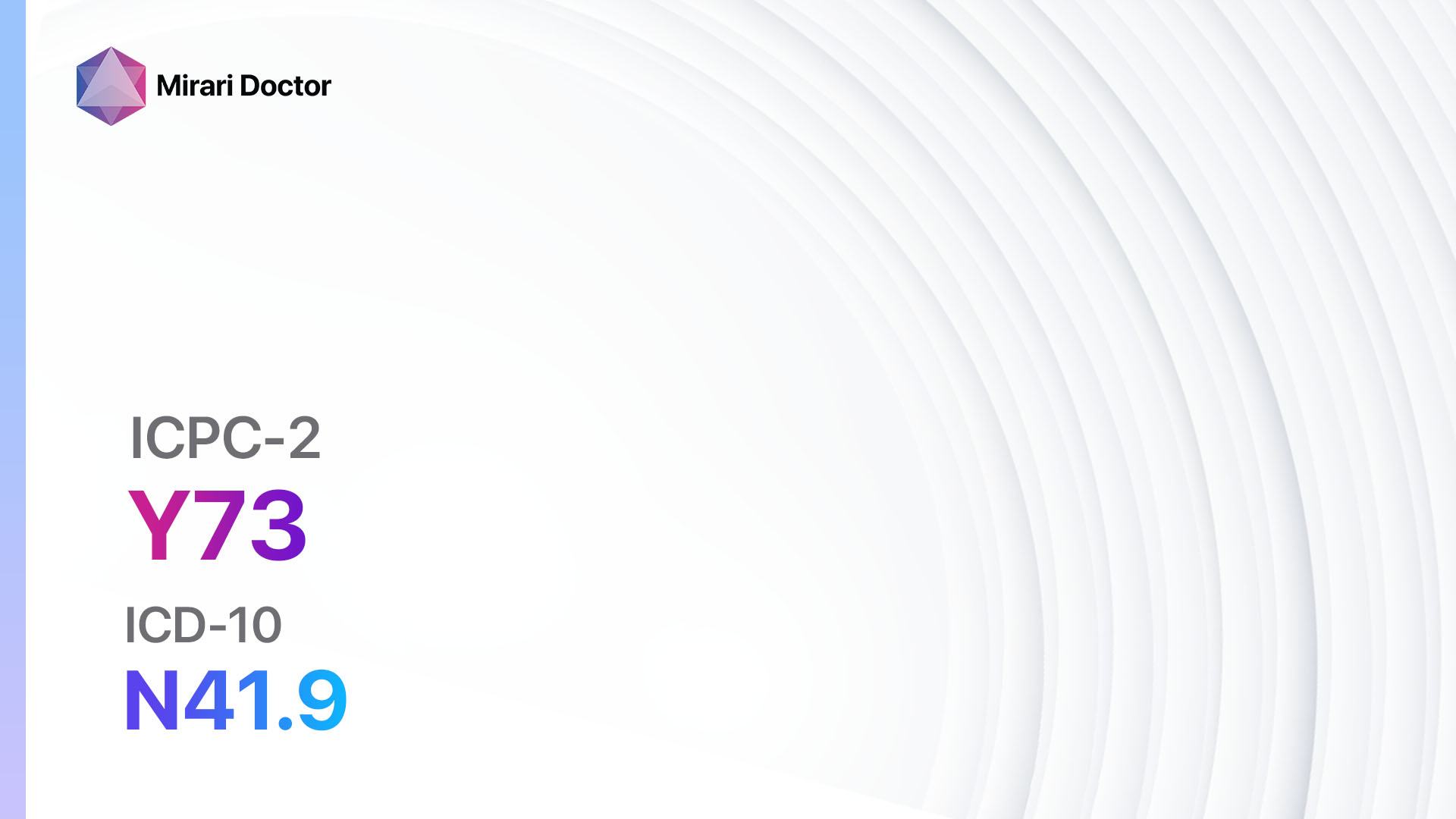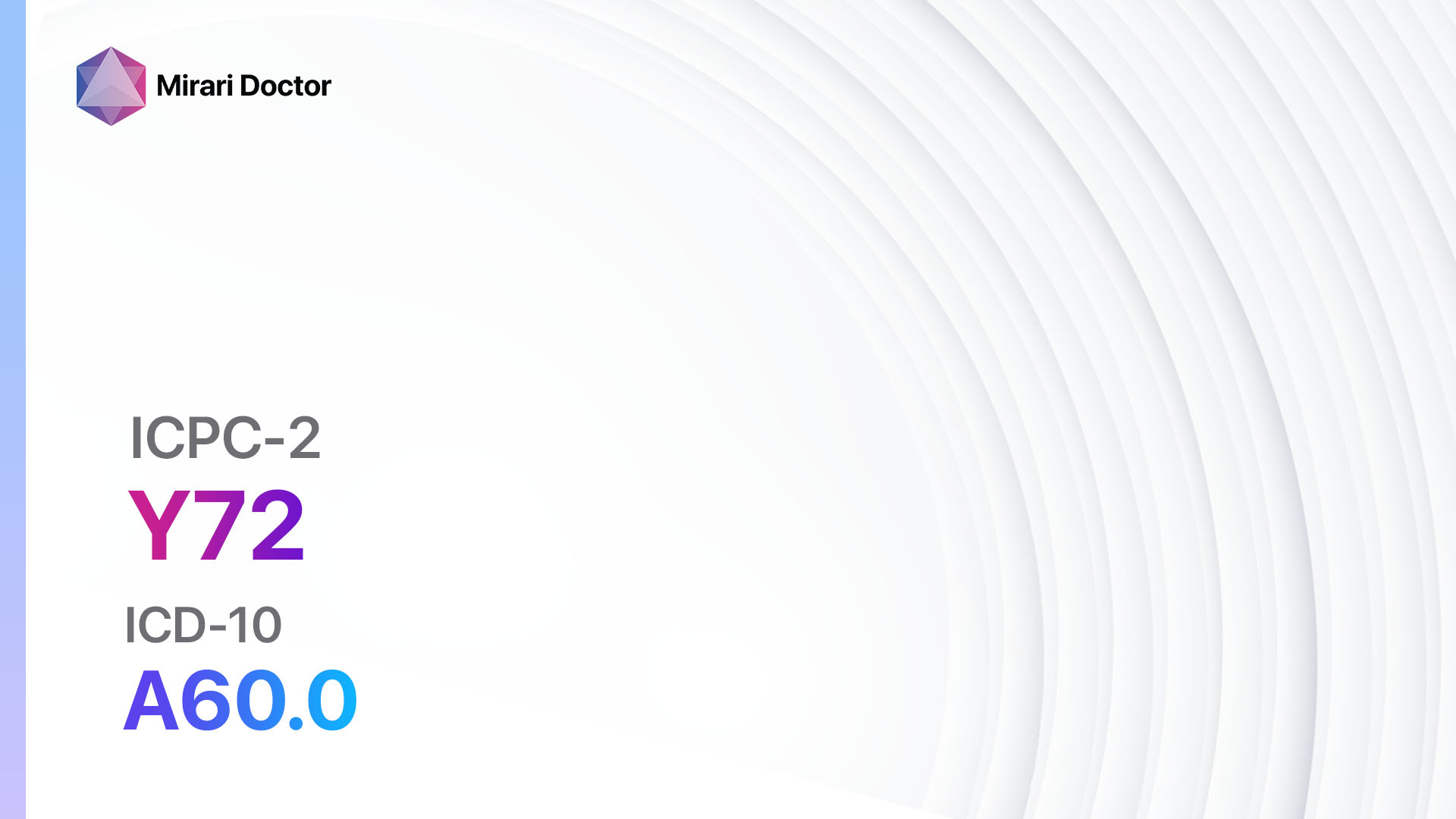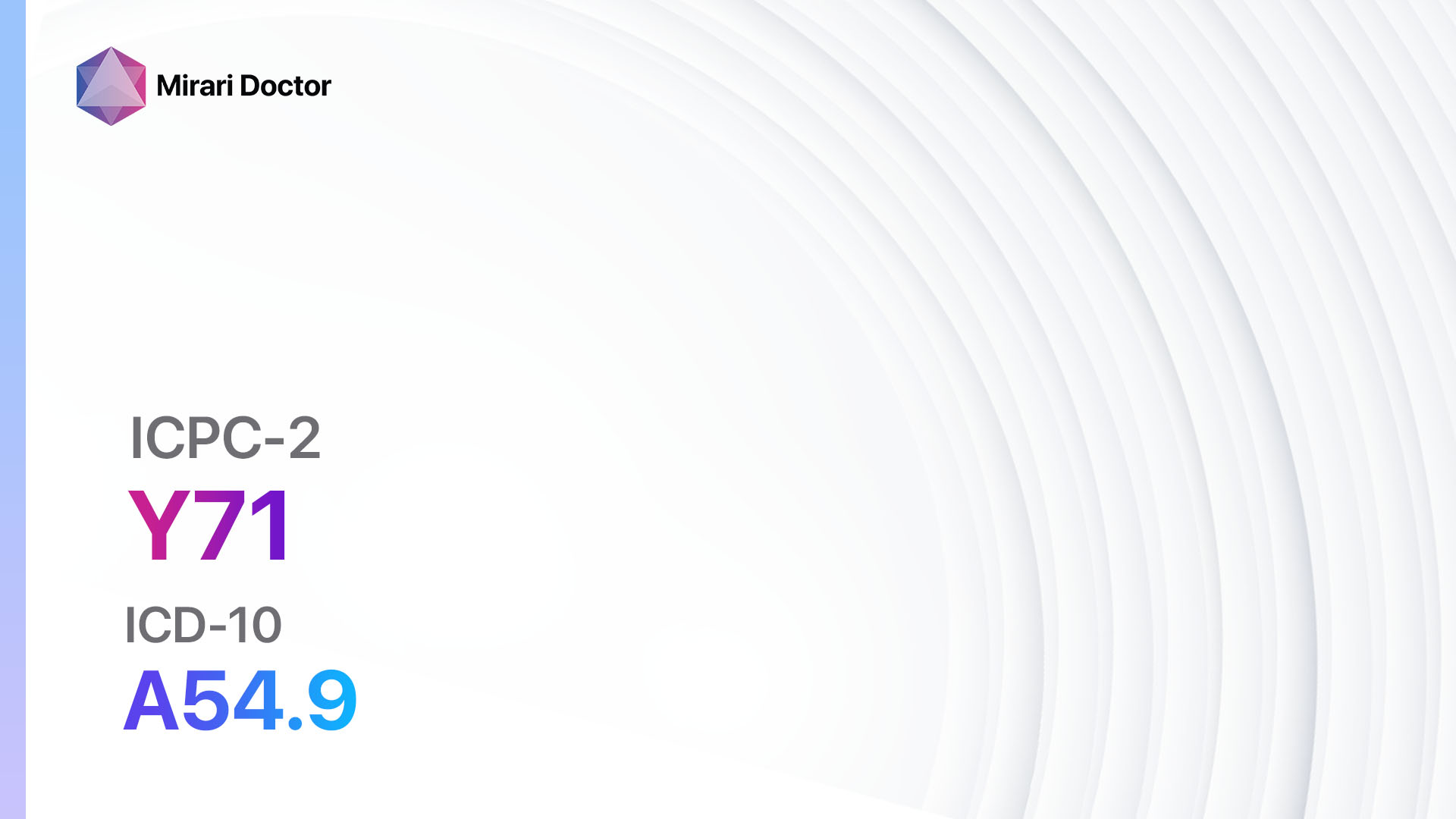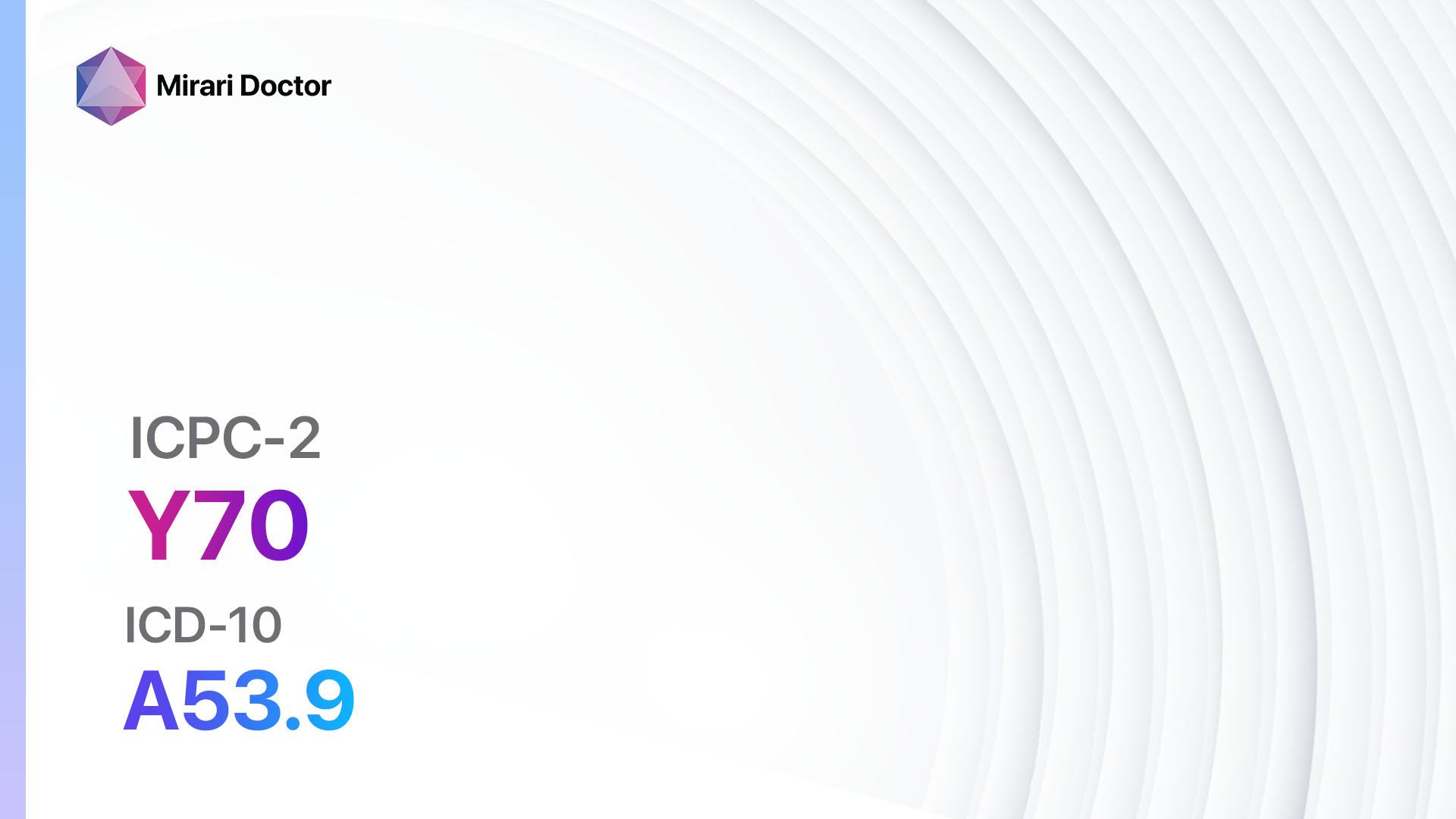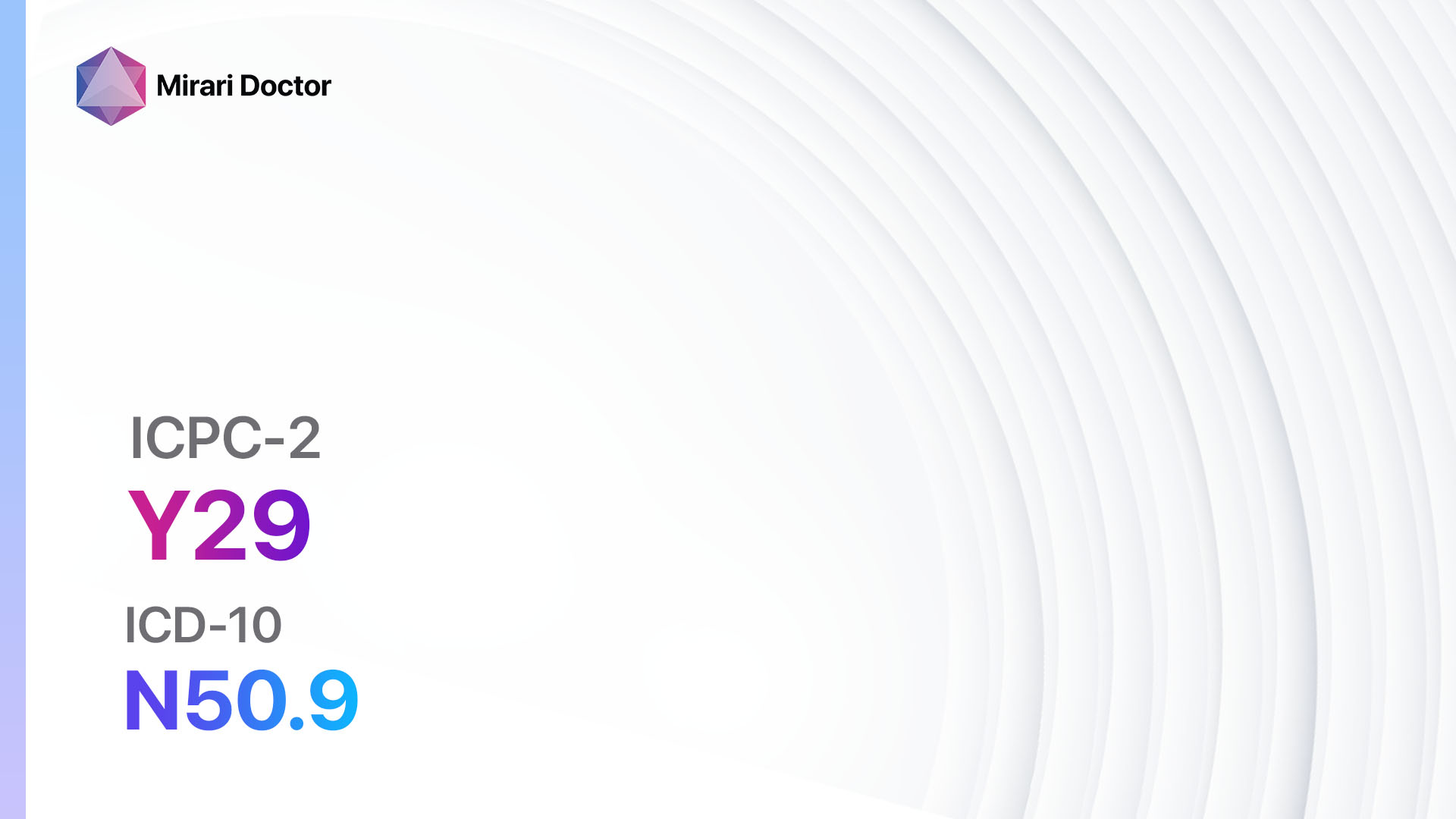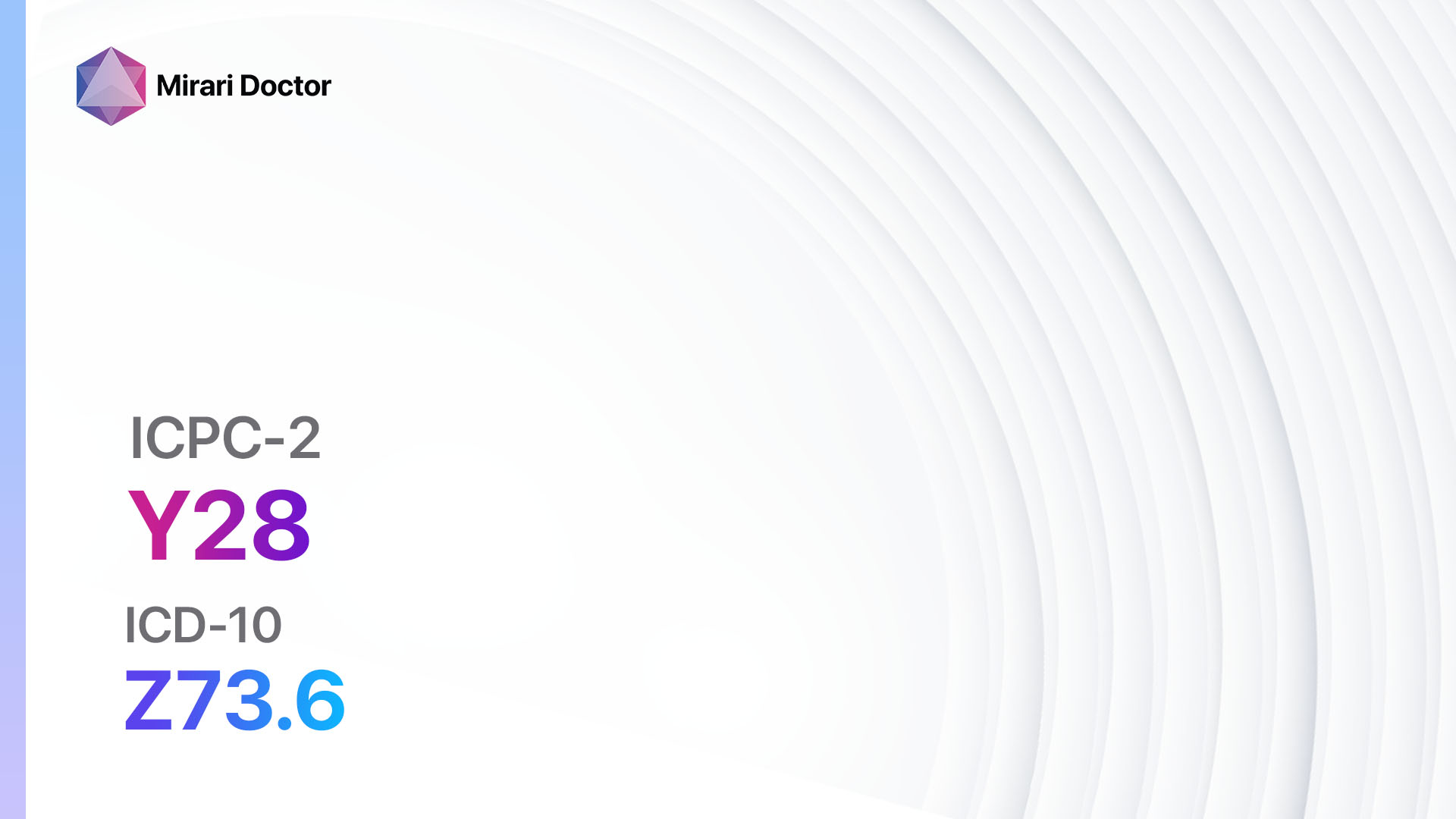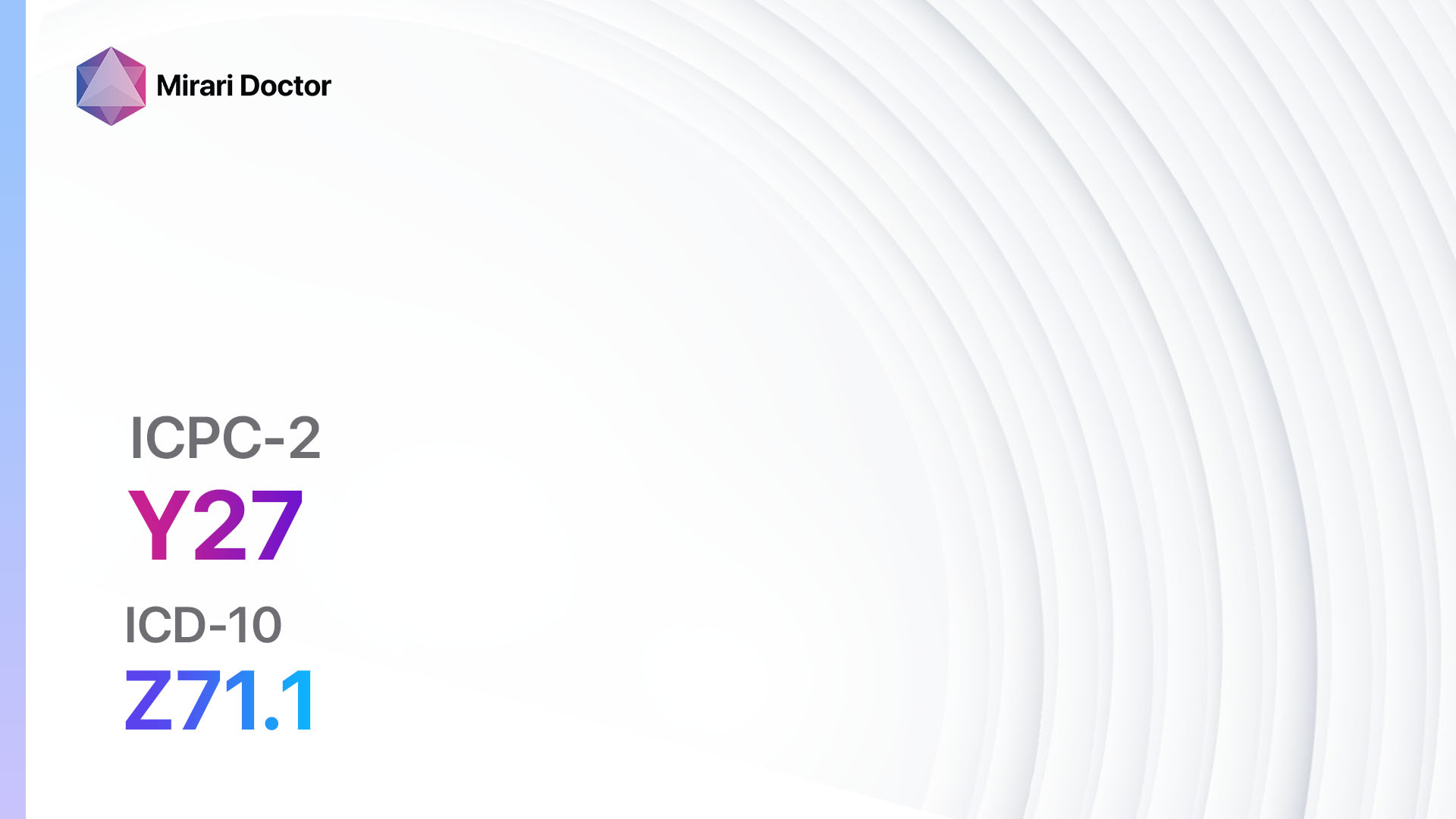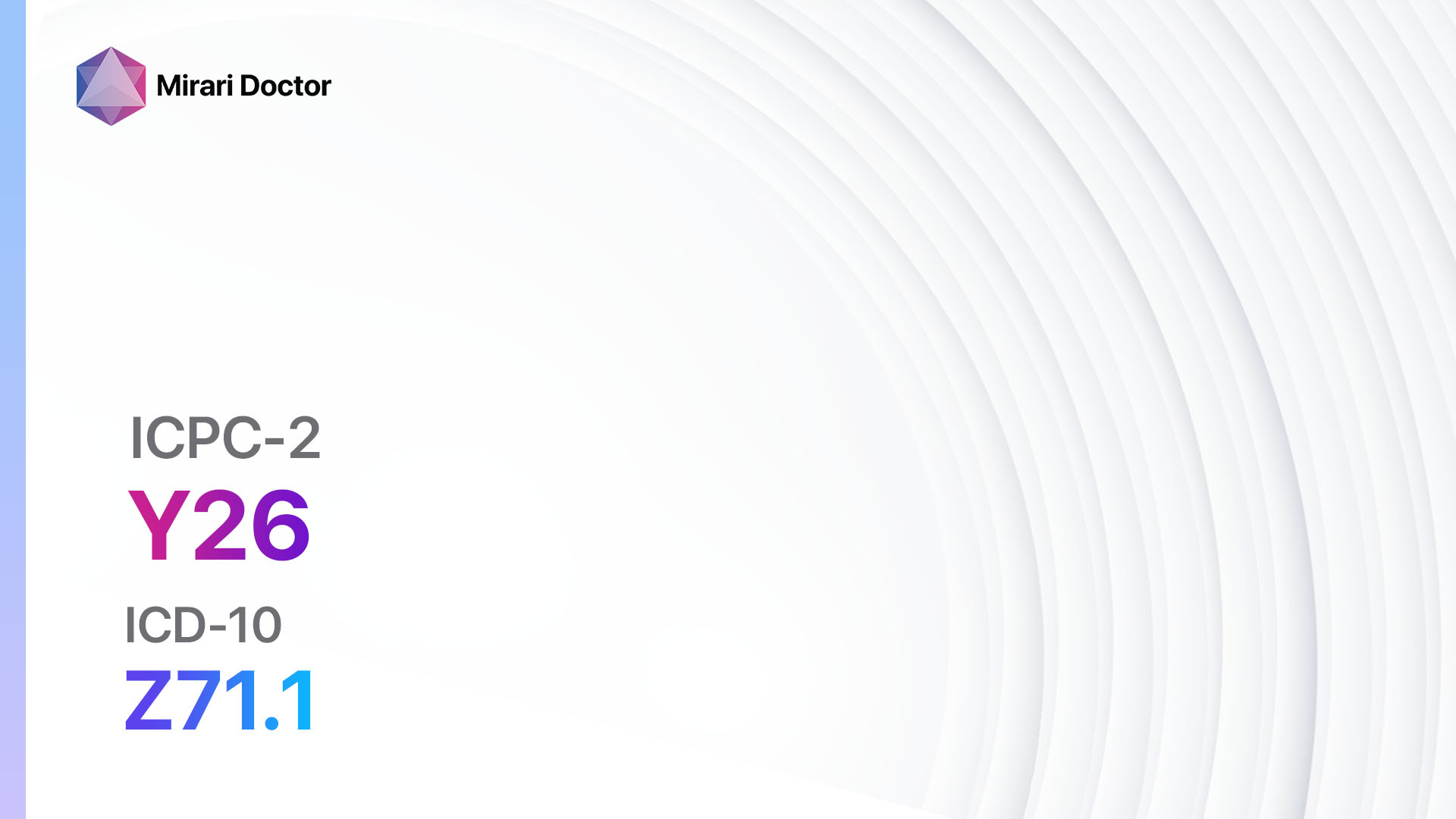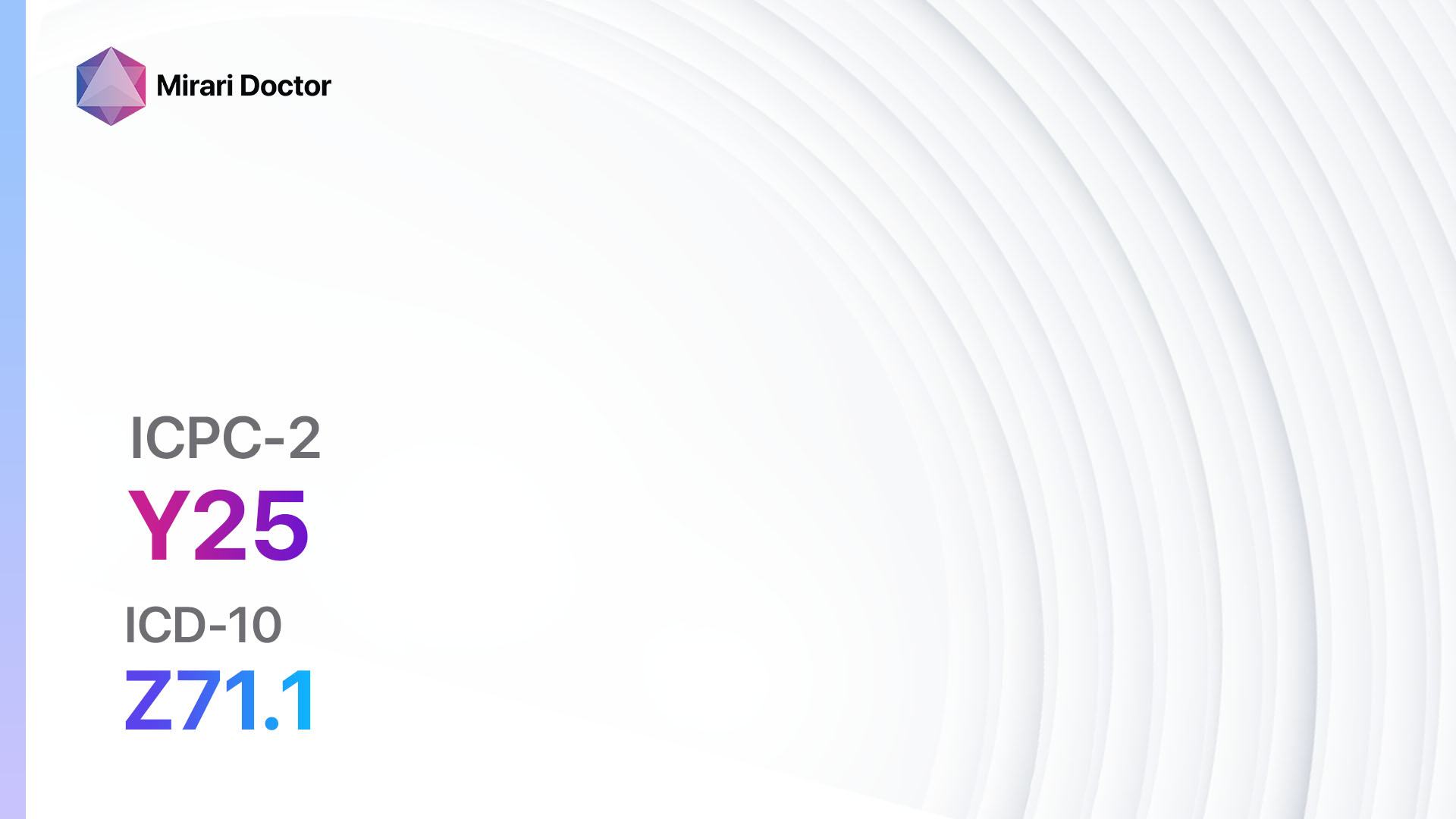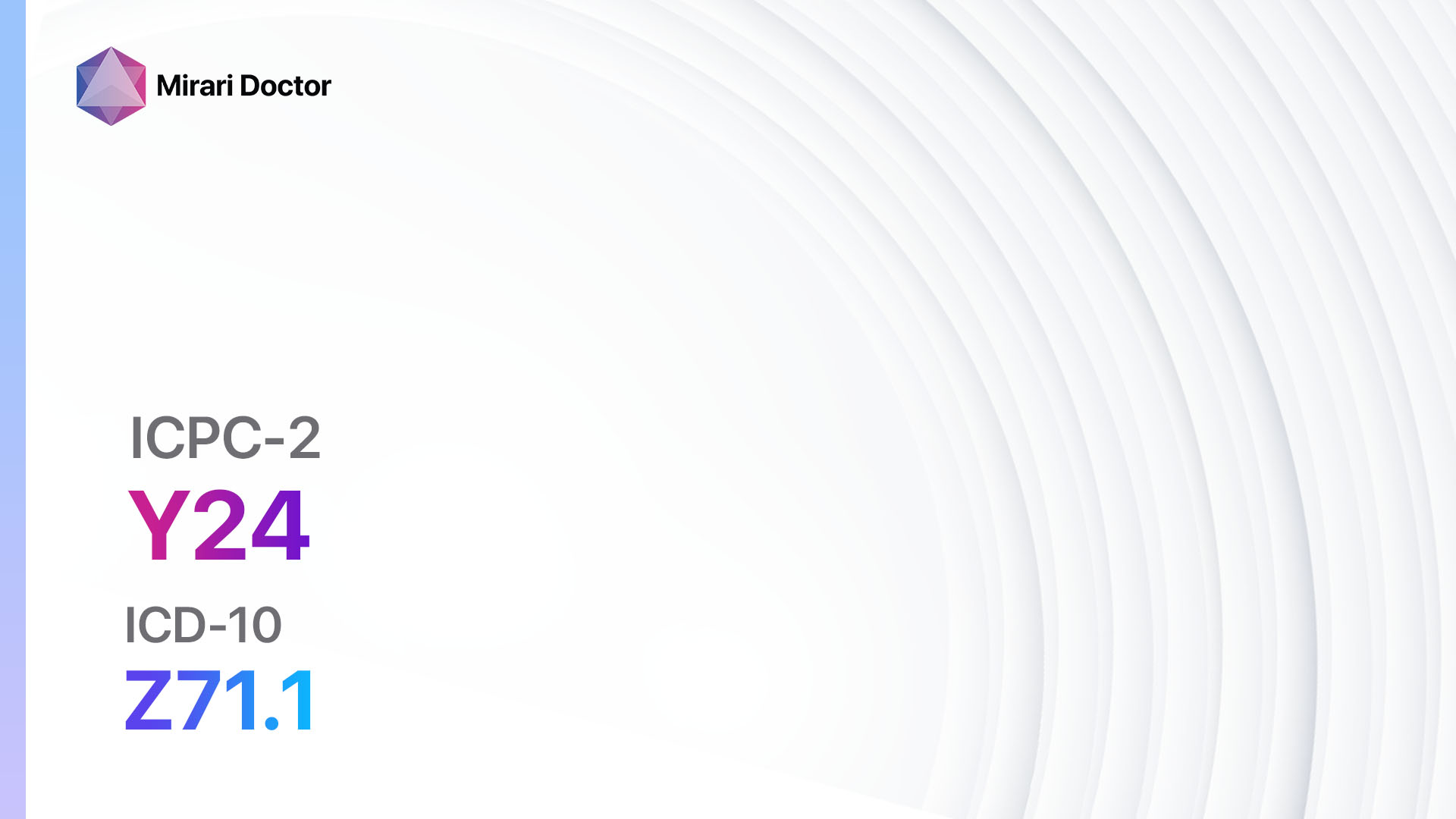
Introduction
Balanitis is a common condition characterized by inflammation of the head of the penis (glans) and the foreskin. It can cause discomfort, pain, and swelling, and may be accompanied by other symptoms such as redness, itching, and a discharge[1]. Balanitis can affect males of all ages, but is more common in uncircumcised men[2]. The aim of this guide is to provide an overview of the symptoms, causes, diagnostic steps, possible interventions, and lifestyle interventions for balanitis.
Codes
Symptoms
- Redness and swelling of the glans and foreskin
- Itching and irritation
- Pain or discomfort
- Discharge
- Odor[3]
Causes
- Poor hygiene
- Tight foreskin (phimosis)
- Diabetes
- Irritation from soaps, detergents, or other chemicals
- Fungal or bacterial infection
- Sexually transmitted infections (STIs)
- Allergic reactions to certain substances[4]
Diagnostic Steps
Medical History
- Gather information about the patient’s symptoms, including the duration and severity of symptoms.
- Ask about personal hygiene habits and any recent changes in hygiene routine.
- Inquire about any underlying medical conditions, such as diabetes, that may increase the risk of balanitis.
- Assess the patient’s sexual history to determine if there is a possibility of STIs[5].
Physical Examination
- Examine the glans and foreskin for signs of redness, swelling, discharge, or other abnormalities.
- Assess the patient’s overall genital hygiene and cleanliness.
- Look for any signs of phimosis or other anatomical issues that may contribute to balanitis[6].
Laboratory Tests
- Collect a swab sample from the glans or foreskin to test for bacterial or fungal infections.
- Perform a urine test to check for the presence of glucose, which may indicate diabetes.
- If there is suspicion of an STI, perform tests for common infections such as chlamydia, gonorrhea, or herpes[7].
Diagnostic Imaging
- Diagnostic imaging is typically not necessary for the diagnosis of balanitis. However, in some cases, a biopsy may be performed to rule out other conditions[8].
Other Tests
- In certain cases, a blood test may be performed to check for underlying medical conditions that may contribute to balanitis, such as diabetes or autoimmune disorders[9].
Follow-up and Patient Education
- Provide the patient with information about the diagnosis and treatment plan.
- Instruct the patient on proper hygiene practices, including cleaning the genital area regularly and avoiding irritants.
- Advise the patient to avoid sexual activity until the symptoms have resolved.
- Schedule a follow-up appointment to monitor the patient’s progress and ensure that the balanitis has resolved[10].
Possible Interventions
Traditional Interventions
Medications:
Top 5 drugs for Balanitis:
- Antifungal creams (e.g., Clotrimazole, Miconazole):
- Cost: Over-the-counter creams can range from $5-$15. Prescription-strength creams may cost up to $50.
- Contraindications: Hypersensitivity to the active ingredient.
- Side effects: Mild skin irritation.
- Severe side effects: Rare, but may include severe allergic reactions.
- Drug interactions: Minimal.
- Warning: Apply as directed and continue treatment for the recommended duration.
- Topical corticosteroids (e.g., Hydrocortisone):
- Cost: Over-the-counter creams can range from $5-$15. Prescription-strength creams may cost up to $50.
- Contraindications: Hypersensitivity to the active ingredient.
- Side effects: Thinning of the skin, skin discoloration.
- Severe side effects: Rare, but may include systemic absorption and adrenal suppression.
- Drug interactions: Minimal.
- Warning: Use sparingly and as directed. Do not use for extended periods of time without medical supervision.
- Antibiotics (e.g., Clindamycin, Erythromycin):
- Cost: Generic versions can be $5-$30 for a course of treatment.
- Contraindications: Hypersensitivity to the antibiotic.
- Side effects: Upset stomach, diarrhea.
- Severe side effects: Rare, but may include severe allergic reactions or Clostridium difficile infection.
- Drug interactions: Minimal.
- Warning: Take as directed and complete the full course of treatment.
- Antihistamines (e.g., Diphenhydramine, Loratadine):
- Cost: Over-the-counter antihistamines can range from $5-$15. Prescription-strength antihistamines may cost up to $50.
- Contraindications: Hypersensitivity to the antihistamine.
- Side effects: Drowsiness, dry mouth.
- Severe side effects: Rare, but may include severe allergic reactions or difficulty urinating.
- Drug interactions: Minimal.
- Warning: Use caution when operating machinery or driving due to potential drowsiness.
- Steroid injections (e.g., Triamcinolone):
- Cost: The cost can vary depending on the healthcare provider and insurance coverage.
- Contraindications: Hypersensitivity to the steroid.
- Side effects: Pain at the injection site, temporary skin discoloration.
- Severe side effects: Rare, but may include infection or damage to surrounding tissues.
- Drug interactions: Minimal.
- Warning: Administered by a healthcare professional. Follow post-injection care instructions.
Alternative Drugs:
- Antiseptic creams (e.g., Povidone-iodine): Used to clean the affected area and prevent infection. – Oral antifungal medications (e.g., Fluconazole): Reserved for severe or recurrent cases of balanitis. – Topical calcineurin inhibitors (e.g., Tacrolimus, Pimecrolimus): Used for cases of balanitis caused by allergic reactions or autoimmune disorders. – Topical antibacterial creams (e.g., Mupirocin): Used for cases of balanitis caused by bacterial infections.
Surgical Procedures:
- Circumcision: In cases of recurrent or severe balanitis, circumcision may be recommended to remove the foreskin and prevent future episodes. Cost: $1,500 to $3,000.
Alternative Interventions
- Warm water soaks: Soaking the affected area in warm water can help reduce inflammation and promote healing. Cost: Free.
- Topical natural remedies: Applying natural remedies such as aloe vera gel or tea tree oil may help soothe the inflamed skin. Cost: Varies depending on the product used.
- Probiotics: Taking oral or topical probiotics may help restore the natural balance of bacteria on the skin. Cost: Varies depending on the product used.
- Avoiding irritants: Identifying and avoiding potential irritants, such as certain soaps or detergents, may help prevent balanitis. Cost: Varies depending on the individual’s preferences.
Lifestyle Interventions
- Practice good hygiene: Clean the genital area regularly with mild soap and warm water. Avoid using harsh soaps or excessive scrubbing. Cost: Minimal.
- Avoid irritants: Use gentle, fragrance-free products on the genital area and avoid potential irritants such as tight-fitting underwear or condoms. Cost: Varies depending on individual preferences.
- Maintain a healthy lifestyle: Manage underlying medical conditions, such as diabetes, through proper diet, exercise, and medication. Cost: Varies depending on individual healthcare needs.
- Safe sexual practices: Practice safe sex to reduce the risk of STIs, which can contribute to balanitis. Cost: Minimal.
- Avoid tight clothing: Choose loose-fitting clothing to allow for proper airflow and prevent irritation. Cost: Varies depending on individual preferences.
- Weight management: Maintain a healthy weight to reduce the risk of certain medical conditions that can contribute to balanitis. Cost: Varies depending on individual healthcare needs.
It is important to note that the cost ranges provided are approximate and may vary depending on the location and availability of the interventions.
Mirari Cold Plasma Alternative Intervention
Understanding Mirari Cold Plasma
- Safe and Non-Invasive Treatment: Mirari Cold Plasma is a safe and non-invasive treatment option for various skin conditions. It does not require incisions, minimizing the risk of scarring, bleeding, or tissue damage.
- Efficient Extraction of Foreign Bodies: Mirari Cold Plasma facilitates the removal of foreign bodies from the skin by degrading and dissociating organic matter, allowing easier access and extraction.
- Pain Reduction and Comfort: Mirari Cold Plasma has a local analgesic effect, providing pain relief during the treatment, making it more comfortable for the patient.
- Reduced Risk of Infection: Mirari Cold Plasma has antimicrobial properties, effectively killing bacteria and reducing the risk of infection.
- Accelerated Healing and Minimal Scarring: Mirari Cold Plasma stimulates wound healing and tissue regeneration, reducing healing time and minimizing the formation of scars.
Mirari Cold Plasma Prescription
Video instructions for using Mirari Cold Plasma Device – Y75 Balanitis (ICD-10:N48.1)
| Mild | Moderate | Severe |
| Mode setting: 1 (Infection) Location: 0 (Localized) Morning: 15 minutes, Evening: 15 minutes |
Mode setting: 1 (Infection) Location: 0 (Localized) Morning: 30 minutes, Lunch: 30 minutes, Evening: 30 minutes |
Mode setting: 1 (Infection) Location: 0 (Localized) Morning: 30 minutes, Lunch: 30 minutes, Evening: 30 minutes |
| Mode setting: 2 (Wound Healing) Location: 0 (Localized) Morning: 15 minutes, Evening: 15 minutes |
Mode setting: 2 (Wound Healing) Location: 0 (Localized) Morning: 30 minutes, Lunch: 30 minutes, Evening: 30 minutes |
Mode setting: 2 (Wound Healing) Location: 0 (Localized) Morning: 30 minutes, Lunch: 30 minutes, Evening: 30 minutes |
| Mode setting: 3 (Antiviral Therapy) Location: 0 (Localized) Morning: 15 minutes, Evening: 15 minutes |
Mode setting: 3 (Antiviral Therapy) Location: 0 (Localized) Morning: 30 minutes, Lunch: 30 minutes, Evening: 30 minutes |
Mode setting: 3 (Antiviral Therapy) Location: 0 (Localized) Morning: 30 minutes, Lunch: 30 minutes, Evening: 30 minutes |
| Mode setting: 7 (Immunotherapy) Location: 1 (Sacrum) Morning: 15 minutes, Evening: 15 minutes |
Mode setting: 7 (Immunotherapy) Location: 1 (Sacrum) Morning: 30 minutes, Lunch: 30 minutes, Evening: 30 minutes |
Mode setting: 7 (Immunotherapy) Location: 1 (Sacrum) Morning: 30 minutes, Lunch: 30 minutes, Evening: 30 minutes |
| Total Morning: 60 minutes approx. $10 USD, Evening: 60 minutes approx. $10 USD |
Total Morning: 120 minutes approx. $20 USD, Lunch: 120 minutes approx. $20 USD, Evening: 120 minutes approx. $20 USD, |
Total Morning: 120 minutes approx. $20 USD, Lunch: 120 minutes approx. $20 USD, Evening: 120 minutes approx. $20 USD, |
| Usual treatment for 7-60 days approx. $140 USD – $1200 USD | Usual treatment for 6-8 weeks approx. $2,520 USD – $3,360 USD |
Usual treatment for 3-6 months approx. $5,400 USD – $10,800 USD
|
 |
|
Use the Mirari Cold Plasma device to treat Balanitis effectively.
WARNING: MIRARI COLD PLASMA IS DESIGNED FOR THE HUMAN BODY WITHOUT ANY ARTIFICIAL OR THIRD PARTY PRODUCTS. USE OF OTHER PRODUCTS IN COMBINATION WITH MIRARI COLD PLASMA MAY CAUSE UNPREDICTABLE EFFECTS, HARM OR INJURY. PLEASE CONSULT A MEDICAL PROFESSIONAL BEFORE COMBINING ANY OTHER PRODUCTS WITH USE OF MIRARI.
Step 1: Cleanse the Skin
- Start by cleaning the affected area of the skin with a gentle cleanser or mild soap and water. Gently pat the area dry with a clean towel.
Step 2: Prepare the Mirari Cold Plasma device
- Ensure that the Mirari Cold Plasma device is fully charged or has fresh batteries as per the manufacturer’s instructions. Make sure the device is clean and in good working condition.
- Switch on the Mirari device using the power button or by following the specific instructions provided with the device.
- Some Mirari devices may have adjustable settings for intensity or treatment duration. Follow the manufacturer’s instructions to select the appropriate settings based on your needs and the recommended guidelines.
Step 3: Apply the Device
- Place the Mirari device in direct contact with the affected area of the skin. Gently glide or hold the device over the skin surface, ensuring even coverage of the area experiencing.
- Slowly move the Mirari device in a circular motion or follow a specific pattern as indicated in the user manual. This helps ensure thorough treatment coverage.
Step 4: Monitor and Assess:
- Keep track of your progress and evaluate the effectiveness of the Mirari device in managing your Balanitis. If you have any concerns or notice any adverse reactions, consult with your health care professional.
Note
This guide is for informational purposes only and should not replace the advice of a medical professional. Always consult with your healthcare provider or a qualified medical professional for personal advice, diagnosis, or treatment. Do not solely rely on the information presented here for decisions about your health. Use of this information is at your own risk. The authors of this guide, nor any associated entities or platforms, are not responsible for any potential adverse effects or outcomes based on the content.
Mirari Cold Plasma System Disclaimer
- Purpose: The Mirari Cold Plasma System is a Class 2 medical device designed for use by trained healthcare professionals. It is registered for use in Thailand and Vietnam. It is not intended for use outside of these locations.
- Informational Use: The content and information provided with the device are for educational and informational purposes only. They are not a substitute for professional medical advice or care.
- Variable Outcomes: While the device is approved for specific uses, individual outcomes can differ. We do not assert or guarantee specific medical outcomes.
- Consultation: Prior to utilizing the device or making decisions based on its content, it is essential to consult with a Certified Mirari Tele-Therapist and your medical healthcare provider regarding specific protocols.
- Liability: By using this device, users are acknowledging and accepting all potential risks. Neither the manufacturer nor the distributor will be held accountable for any adverse reactions, injuries, or damages stemming from its use.
- Geographical Availability: This device has received approval for designated purposes by the Thai and Vietnam FDA. As of now, outside of Thailand and Vietnam, the Mirari Cold Plasma System is not available for purchase or use.
References
- Wray AA, Velasquez J, Khetarpal S. Balanitis. In: StatPearls. Treasure Island (FL): StatPearls Publishing; 2023.
- Edwards S. Balanitis and balanoposthitis: a review. Genitourin Med. 1996;72(3):155-159.
- Birley HD, Walker MM, Luzzi GA, et al. Clinical features and management of recurrent balanitis; association with atopy and genital washing. Genitourin Med. 1993;69(5):400-403.
- Lisboa C, Ferreira A, Resende C, Rodrigues AG. Infectious balanoposthitis: management, clinical and laboratory features. Int J Dermatol. 2009;48(2):121-124.
- Buechner SA. Common skin disorders of the penis. BJU Int. 2002;90(5):498-506.
- Escala JM, Rickwood AM. Balanitis. Br J Urol. 1989;63(2):196-197.
- Rao A, Bunker C. Male genital skin biopsy. Int J STD AIDS. 2011;22(8):418-422.
- Pearce J. Infectious balanitis. Practitioner. 1990;234(1486):160-163.
- Keogh G. Balanitis and balanoposthitis. In: Griffiths C, Barker J, Bleiker T, Chalmers R, Creamer D, eds. Rook’s Textbook of Dermatology. 9th ed. Wiley-Blackwell; 2016:112.1-112.8.
- Stary A, Soeltz-Szoets J, Ziegler C, et al. Comparison of the efficacy and safety of oral fluconazole and topical clotrimazole in patients with candidal balanitis. Genitourin Med. 1996;72(2):98-102.
Related articles
Made in USA


